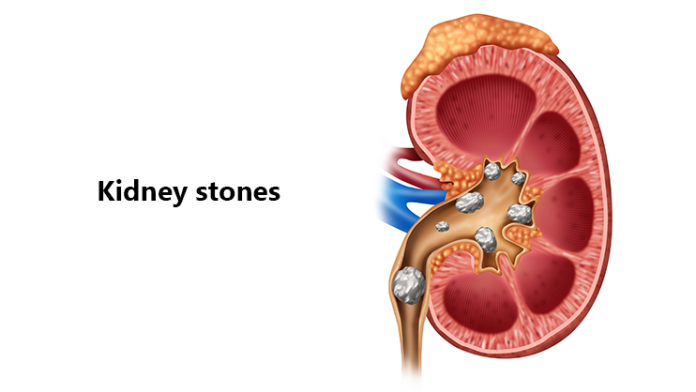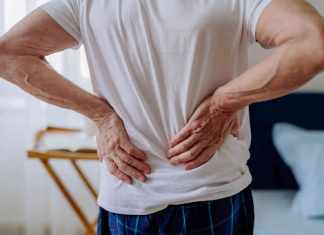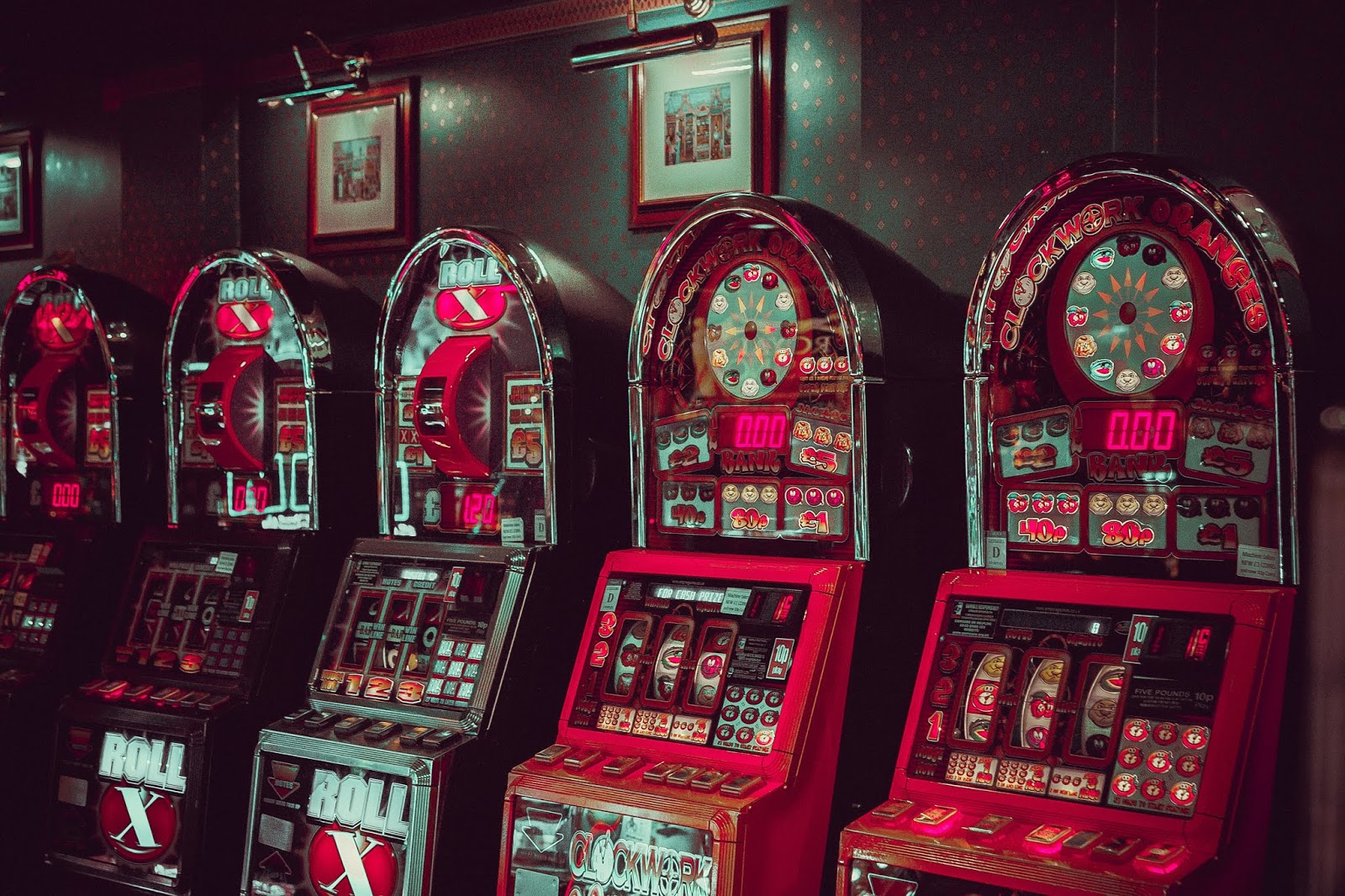Health is wealth. This proverb is the most honest one. But whenever there is any problem in the human body, there are some signs related to it. Kidney stones are such a problem. However, there are some signs of kidney stones that tell us to focus on the body. Most people are not even aware of these signs. As a result, they have to face serious consequences. Nevertheless, to inform the people about the symptoms, we will demonstrate signs of kidney stones in this article. We hope that after completing this article, the readers will be well informed and be more careful about their bodies.
Table of Contents
What is a Kidney?
The human body consists of numerous cells, tissues, and organs. These organs control specified activities in the body. However, the kidney is such an organ. The kidney acts as the filter of the body. It separates impurities from the blood and produces urine as a by-product of wastes that contain all impurities.
Furthermore, the human body has two kidneys that are located behind the belly and in the back. To know about kidneys more specifically, we need to know their shape, size, and colour. Precisely, kidneys are mainly bean-shaped and red. Moreover, the kidney is around 4-5 inches in length.
Kidneys are responsible for filtrating the blood and also balancing electrolysis in the body. Notably, we can consider kidneys as a vital organ in the body.
What is Kidney Stone?
The term kidney stone refers to such a problem in the kidney for which there is trouble infiltrating the blood. According to medical science, a kidney stone is a crystalline mineral found in the kidney or urinary tract. However, doctors usually use Nephrolithiasis as a term to describe kidney stone officially. Not only this, but a kidney stone is also known as renal calculi.
Kidney stones are a result of the insufficient presence of fluid in the body. We all know that the kidney removes impurities from the blood. On the other hand, to remove these impurities from the body, we need a fluid supply. However, when the number of pollutants becomes more extensive than the liquid, it becomes nearly impossible for the waste to get out of the body. The amounts of impurities in the kidney continue to rise, and with time, they become hard and form a crystalline formation. Thus, we call it as kidney stone.
Causes:
A kidney stone is familiar kidney disease. The stones can happen to any people. But the ratio is a bit higher for men than women. However, there are some underlying causes of kidney stones. In this part of the article, we will provide the reasons that are responsible for kidney stones. For instance-
- The primary cause is not drinking enough water. To remove the waste, we need the supply of fluid. So, if we do not drink enough water, there will be insufficient fluid in the body.
- Another cause is obesity. This term applies to overweight.
- Sometimes having done gastric bypass surgery, intestinal surgery also acts as a reason.
- Some conditions that cause high cystine levels, oxalate, uric acid, and calcium, are also underlying reasons for kidney stones.
- Swelling, irritation in the bowel or joints also act as a reason.
- The previous history of kidney stones is also responsible.
- A kidney stone may also run through genetics. If any of our family members have a kidney stone, then there is a chance that we may also have them.
- Polycystic kidney disease is another cause of kidney stones.
- Last but not least, consumption of diuretics calcium-based antacids also can cause kidney stones.
Signs of Kidney Stones:
Kidney stones are one of the most common diseases in Nephrology. Some symptoms help us to detect whether we have a kidney stone or not. However, these symptoms depend on the size of the stone. If the stone’s size is petite so that it can easily pass through the urinary tract, there may have a lack of symptoms or, in some cases, no symptoms at all. Furthermore, there are still some common signs regarding this disease. Such some signs are-
- We may feel pain when we are trying to urinate.
- May also notice the presence of blood in the urine.
- We may feel a sharp pain in the back and lower abdomen region.
- Will also have a feeling of nausea.
- We will vomit often.
- Also, feel urinary urgency.
- We may pass cloudy and foul-smelling urine.
- Due to large stones that can get stuck at the ureter, we may notice a blockage in the urine flow.
- We will suffer from high fever and shivering.
Diagnosis:
After locating the symptoms, the first step we need to take is to consult a Nephrologist as soon as possible. Here the doctor will conduct some procedures to diagnose and locate the kidney stone. There are various methods that doctors follow to diagnose kidney stones. Anyway, we will demonstrate some diagnosis process so that the readers can make themselves prepared about what to expect. So, such operations are-
- Blood Test- The first procedure is conducting a blood test. A blood test will reveal the amount of calcium and uric acid presents in the blood.
- Urine Test- The second procedure is mainly a urine test. In this case, the test shows the amount of stone-forming and stone, preventing substances.
- Imaging- It is the most useful diagnostic procedure. A CT scan or X-ray provides us with exact information about kidney stones.
Treatment:
Treatment of kidney stones depends on the stone’s size as a small stone can easily pass through the urinary tract, while a large stone faces some difficulties. The primary purpose of the treatment here is to remove the stone from the kidney. As a result, we notice various treatment plans. However, there are mainly two types of treatment plans available. Such as-
For Small Stone-
To remove the small stone, we can maintain the following steps-
- We need to drink water. We need to ensure enough fluid present in the body so that the stones can pass through easily.
- During the stone passing time, we will feel some pain. To get rid of this pain, we can take ibuprofen, naproxen sodium.
- Doctors sometimes refer to some medications like alpha-blocker, relaxing the ureter muscles. This medication helps us to pass the stone more smoothly.
For Large Stone-
There is some elaborate treatment plan that the doctors use to remove the large kidney stone. Such treatment plans are-
- After confirming the location and the stone’s size, the doctors use the sound wave to crush the rock. Sound wave routes the stones in such a way that they become easy to pass.
- Doctors also use surgical methods to remove the kidney stone. This procedure is like other surgical methods, and this process is comparatively safe.
Home Remedy for Kidney Stones:
Besides all these treatment plans, some home remedies help the removal process more straightforward. We are showing some such home remedies-
- Lemon Juice- Lemon is an excellent source of citric acid. This citric acid prevents the formation of calcium stone. Furthermore, lemon also breaks small stones. As lemon provides so many benefits, we can easily mix the lemon extract with water and make lemon juice.
- Basil Juice- Though it is called juice, it is mainly tea made of basil. Basil has acetic acid, antioxidants, and anti-inflammatory agents. Moreover, basil helps in breaking the stones and maintaining kidney health.
- Apple Cider Vinegar- Like basil, apple cider vinegar has acetic acid in it.
- Celery Juice- This juice helps us to clear toxins. As a result, there is less pressure on the kidney.
- Pomegranate Juice- Pomegranate lowers the urine’s acidity level. It hinders the formation of kidney stones. Moreover, pomegranate develops overall kidney health.
- Dandelion Root Juice- Dandelion root stimulates bile production. Besides, it eliminates waste and increases urine output, and thus acts as a kidney tonic.
Prevention of Kidney Stones:
There is a famous saying, “Prevention is better than cure.” Though we already know the signs and treatment plan of kidney stones, prevent it from happening is still better than following a treatment plan. Some processes help us to avoid kidney stones. Such as-
- We need to drink water throughout the day. Water helps us to remove impurities from the body. So, we need to ensure the continuous presence of fluid in the body.
- We can choose a diet plan that contains a few salt and animal protein. For this, we can switch towards salt and animal protein substitutes.
- We need to exercise regularly to ensure proper blood circulation throughout the body.
Types of Kidney Stone:
There are several types of kidney stones based on their formatting elements. However, these types include-
- Calcium Stone- This stone consists of calcium oxalate, as the name itself suggests. Liver, Some fruits and vegetables, nuts, chocolate act as a source of oxalate. On the other hand, calcium stones can also form as calcium phosphate. We can find it in renal tubular acidosis.
- Struvite Stone- It forms due to the infection in the urinary tract. In this type, it grows too quickly and also they are large.
- Uric Acid Stone- This typically happens because of chronic diarrhoea as we lose too much fluid. As a result, there is an increase of uric acid in the body, which later forms a uric acid stone.
- Cystine Stone- It happens due to hereditary diseases. For this type of stone, we can notice an increased amount of amino acid.
FAQs for Signs Of Kidney Stones:
Question No 01: Are there any risk factors?
Answer: Unfortunately, there are indeed some risk factors. Those factors are-
- A kidney stone can happen if any of our family members have it.
- Digestive disease.
- Various medical conditions.
Question No 02: What is kidney stone pain like to the patients?
Answer: One of the most common kidney stone symptoms is excessive and sharp pain in the back and lower abdomen region. This pain is only like a storm. It attacks suddenly. Furthermore, it is like waves. It just continues to come.
Question No 03: Does walking help pass kidney stones?
Answer: Walking or any form of exercise acts as a great help in reducing kidney stones. It helps to move the stone naturally. Moreover, light jogging or walking shorten the timing of kidney stone.
Question No 04: What should not eat in kidney stone?
Answer: In kidney stone, we need to avoid eating foods like nuts, peanuts, rhubarb, spinach, wheat bran. These foods are high in calcium oxalate and increase the chance of kidney stones.
Question No 05: When should you go to the ER for a kidney stone?
Answer: Kidney stones may turn into a severe condition. We may need to head into the ER. IN this case, we may experience fever around 101.5 degrees Fahrenheit. We may also face a burning sensation while urinating. Furthermore, we may experience cloudy and foul-smelling urine.
Question No 06: How long should kidney stone pain last?
Answer: Patients start to feel massive pain if the stone moves towards the ureter. In kidney stones, we feel pain in our lower abdomen region. This pain typically lasts around 4-6 weeks.
Final words for Signs Of Kidney Stones
The kidney is one of the vital organs in the human body. Kidney stone hinders the kidney’s standard functionality, which indirectly hampers the overall metabolism of the body. There are some signs of kidney stones that help us identify kidney stones, and in the above article, we have briefly discussed it. Anyway, to sum up, we hope that the readers are now well aware of kidney stones and can quickly decide whether they have it or not. Thus, we wish our readers a healthy life.















